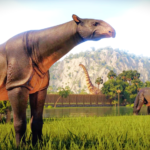The Githurai Massacre stands as one of the most harrowing incidents in recent Kenyan history, marking a dark chapter of violence and loss. In this guide, we aim to provide a detailed examination of the events leading up to, during, and after the massacre, drawing on a wide range of sources to offer a nuanced and in-depth perspective.
Background and Context
Historical and Socio-Political Environment
To fully understand the Githurai Massacre, it is crucial to examine the socio-political landscape of Kenya during the period. The massacre did not occur in isolation but was a culmination of escalating tensions fueled by ethnic, political, and socio-economic factors.
Kenya, a nation with a rich cultural tapestry, has long struggled with issues of ethnic division and political rivalry. The period leading up to the massacre was marked by heightened political tensions, with various ethnic groups vying for power and influence. These tensions were further exacerbated by economic disparities, which created an environment ripe for conflict.
The Role of Ethnic Tensions
Ethnic tensions have been a persistent issue in Kenya, often leading to violence during election periods. In the years preceding the Githurai Massacre, these tensions had been simmering, with various political leaders exploiting ethnic divisions for their own gain. The violence that erupted in Githurai was not merely a spontaneous outburst but the result of long-standing grievances and manipulation by powerful interests.
The Events of the Githurai Massacre
Prelude to the Massacre
The Githurai Massacre was preceded by a series of violent incidents and rising tensions within the community. Reports indicate that there had been clashes between rival groups in the days leading up to the massacre, with several people injured or killed. These incidents created a climate of fear and mistrust, setting the stage for the horrific events that were to follow.
The Day of the Massacre
On the fateful day of the massacre, the situation in Githurai escalated rapidly. Eyewitness accounts describe a chaotic scene, with armed groups clashing in the streets. The violence was indiscriminate, with men, women, and children caught in the crossfire. The exact number of casualties remains disputed, but it is clear that the massacre resulted in significant loss of life and widespread destruction.
The Aftermath and Immediate Response
The immediate aftermath of the massacre was marked by shock and outrage, both within Kenya and internationally. The government faced widespread criticism for its failure to prevent the violence, with many accusing officials of either being complicit in the events or grossly negligent. In the days that followed, there were numerous calls for justice, with human rights organizations demanding an independent investigation into the massacre.
Investigations and Legal Proceedings
Government and International Investigations
In the wake of the massacre, both the Kenyan government and international bodies launched investigations into the events. These investigations aimed to uncover the truth behind the violence, identify those responsible, and bring them to justice. However, the process was fraught with challenges, including political interference, intimidation of witnesses, and a lack of cooperation from key figures.
Challenges in Pursuing Justice
Pursuing justice for the victims of the Githurai Massacre has proven to be a complex and difficult process. The political climate in Kenya, coupled with the influence of powerful individuals implicated in the violence, has made it difficult to achieve accountability. Despite these challenges, efforts to seek justice continue, with several legal cases still pending in the courts.
Impact on the Githurai Community
Social and Economic Consequences
The impact of the Githurai Massacre on the local community has been profound and long-lasting. In the immediate aftermath, many families were left devastated by the loss of loved ones. The violence also had a significant economic impact, with businesses destroyed and livelihoods lost. The trauma of the massacre continues to affect the community to this day, with many struggling to rebuild their lives in the wake of the tragedy.
Long-Term Effects on Ethnic Relations
The massacre has also had a lasting impact on ethnic relations in Githurai and beyond. The violence deepened existing divisions, leading to increased mistrust and tension between different ethnic groups. Efforts to promote reconciliation and healing have been made, but the wounds left by the massacre are still raw, and the road to recovery remains long.
The Broader Implications for Kenya
Lessons Learned
The Githurai Massacre serves as a stark reminder of the dangers of ethnic and political divisions. It highlights the need for greater efforts to promote unity and understanding among Kenya’s diverse communities. The massacre also underscores the importance of accountability and the rule of law in preventing such tragedies from occurring in the future.
The Role of Media and Civil Society
The role of the media and civil society in documenting and responding to the Githurai Massacre has been critical. Journalists and human rights organizations played a key role in bringing the events to light and keeping the issue in the public eye. Their efforts have been instrumental in pushing for justice and ensuring that the victims’ voices are heard.
Conclusion
The Githurai Massacre is a tragic event that has left an indelible mark on Kenya’s history. It is a reminder of the consequences of unchecked ethnic and political tensions and the importance of addressing these issues to build a more peaceful and just society. As we reflect on the massacre, it is crucial to continue the fight for justice and to work towards a future where such violence is a thing of the past.



